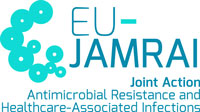Step by step guide for the implementation and assessment of Community of Practice
- Community of Practice (CoP): A Community of Practice (CoP) is a group of individuals who share a common interest, concern or set of problems (e.g., antimicrobial resistance, antimicrobial stewardship in a particular setting), or a passion for a specific domain. They deepen their collective knowledge, skills, and expertise in this domain by interacting regularly, sharing information and experiences, learning from each other, and developing a shared repertoire of resources and practices. CoPs are characterized by three core structural elements:
- Domain: The shared area of interest and competence that brings the community together and provides its identity (e.g., “AMS in Primary Care,” “One Health Approaches to AMR Surveillance”).
- Community: The social fabric of learning, involving mutual engagement, trusting relationships, a sense of belonging, and shared identity among members that enables collaborative learning.
- Practice: The shared body of knowledge, methods, tools, stories, language, and documents that members develop, share, and maintain related to their domain. This includes ways of addressing recurring problems. CoPs can be face-to-face, entirely virtual (Virtual Communities of Practice – VCoPs), or adopt a blended model. Their primary functions include generating and disseminating knowledge, fostering innovation, supporting professional development, improving practice, and facilitating organizational change. (Harris et al., 2017, discuss CoPs for managing complex “wicked problems” like AMR).
- Community of Learning (CoL): While often used interchangeably with CoP, a Community of Learning (CoL) can be considered a broader term or a specific type of CoP where the primary, explicit focus is on the process of collaborative learning, inquiry, and reflection around a shared educational objective or research interest. CoLs might be more formally structured, time-bound, and situated within formal educational settings, but they share the core CoP principles of active interaction, knowledge co-construction, and mutual engagement. In the context of AMR/AMS, both CoPs and CoLs are valuable for fostering social learning, enabling the exchange of practical experiences and tacit knowledge among diverse professionals (often supporting an interprofessional approach), facilitating collaborative problem-solving for complex AMR challenges, and promoting the adoption and adaptation of evidence-based stewardship practices.

Planning a Community of Practice
The following steps should be taken into consideration when planning a Community of Practice (CoP) or a Community of Learning (CoL) on AMR/AMS:
- Identify Domain, Purpose, and Key Stakeholders for AMR/AMS CoP: Clearly define the specific AMR/AMS domain of interest (e.g., stewardship in long-term care facilities, AMR in aquaculture, pediatric AMS) and the overarching purpose or goals of the CoP (e.g., to share best practices, solve common local problems, implement new guidelines, foster research collaboration). Identify key individuals or groups who would benefit from and contribute to such a community, including potential “champions” or core members. (Brooks et al., 2024, emphasize the importance of clearly defining the CoP’s scope and purpose).
- Design and Launch the Community: Decide on the operational model (face-to-face, virtual, or blended) and select appropriate platforms or venues for interaction (e.g., dedicated online platforms like Moodle, Microsoft Teams, Slack, regular meetings, email listservs, instant messaging groups like WhatsApp for informal communication). Establish initial goals, clear norms for interaction and contribution (netiquette for VCoPs), and a tentative plan for activities. Consider forming a core leadership or coordination team.
- Foster Mutual Engagement and Knowledge Sharing: Facilitate regular, meaningful, and diverse interactions among members. This can include scheduled meetings (in-person or virtual), moderated online discussions, thematic webinars or expert presentations, collaborative problem-solving sessions, presentation and discussion of challenging AMR cases, peer-assisted learning, sharing of tools and resources, and joint review or development of AMR/AMS guidelines or protocols. (Gilardi et al., 2021, highlight “mutual engagement” as a key characteristic).
- Cultivate Trust, Psychological Safety, and a Sense of Community: Actively work to create a safe, supportive, and respectful environment where members feel comfortable sharing experiences (including challenges and failures related to AMR/AMS), asking questions, admitting knowledge gaps, offering constructive feedback, and building trusting professional relationships. (Trust is consistently identified as crucial for effective VCoPs, as in McLoughlin et al., 2017).
- Develop a Shared Practice and Collective Resources: Through ongoing interaction and collaboration, the CoP should aim to develop a shared repertoire of practice – common approaches, tools, language, stories, and documented knowledge related to their AMR/AMS domain. This may involve co-creating local AMR guidelines, stewardship protocols, patient education materials, audit tools, or compiling a repository of best practices and useful resources. (Gilardi et al., 2021, foster the development of a “shared repertoire”).
- Provide Active Facilitation and Stewardship: A dedicated facilitator, coordinator, or a small stewardship team plays a vital role in nurturing the CoP. Responsibilities include stimulating participation, connecting members with relevant expertise or resources, organizing and promoting community activities, curating and disseminating valuable AMR/AMS information, helping the community navigate challenges, and supporting its overall health, evolution, and sustainability.
- Monitor, Evaluate, and Adapt: CoPs are dynamic entities that evolve over time. Regularly monitor member engagement, assess the value derived by members, and evaluate progress towards the CoP’s goals. Be prepared to adapt activities, focus areas, and operational strategies based on member feedback and changing needs related to AMR/AMS. (Nguyen et al. (2023) describe the iterative evolution of a CoP based on ongoing evaluation).

Defining roles in a Community of Practice
Facilitator’s role: (CoP Convener/Steward/Moderator/Coordinator): Help define and maintain the CoP’s focus on pertinent AMR/AMS issues. Proactively facilitate interactions, stimulate discussions, and promote knowledge sharing. Connect members with each other and with external experts or resources as needed. Plan, organize, and promote community activities and events. Curate, synthesize, and disseminate valuable AMR/AMS information and resources generated by or relevant to the community. Help resolve conflicts, maintain a positive and trusting environment, and ensure respectful communication. Regularly assess the CoP’s health, engagement levels, and impact, and guide its adaptation and sustainability. (The roles outlined by Brooks et al., 2024, include community manager, content curator, technical support, and evaluator, among others).
Participant’s role (Member): Commit to active and consistent participation in the CoP’s activities. Willingly and constructively share their knowledge, practical experiences (both successes and failures), insights, and challenges related to AMR/AMS. Be open to learning from the diverse experiences and expertise of other members. Contribute to collaborative problem-solving, knowledge co-creation, and the development of the community’s shared practice and resources. Help build and maintain a trusting, respectful, and supportive environment. Take initiative in proposing discussion topics, sharing relevant AMR/AMS information, or volunteering for community tasks.

Assessing a Community of Practice
Methods
- Participation and Engagement Analytics: Tracking active membership, frequency and quality of participation in meetings (face-to-face or virtual), contributions to online discussion forums, use of shared AMR/AMS resources, and involvement in collaborative projects.
- Knowledge Creation and Sharing: Collection and analysis of knowledge products co-created or shared by the CoP, such as locally adapted AMR guidelines, new stewardship protocols, best practice summaries, educational materials, case study repositories, or research outputs.
- Member Surveys and Interviews: Regularly surveying or interviewing members to gather feedback on the perceived value of the CoP, individual learning and skill development related to AMR/AMS, the impact on their professional practice, satisfaction with interactions, quality of facilitation, and overall effectiveness of the community. (Nguyen et al., 2023, used surveys and interviews for program evaluation).
- Case Studies and Impact Stories: Documenting specific examples and narratives of how participation in the CoP has led to solutions for AMR/AMS problems, adoption of new evidence-based practices, improvements in stewardship metrics, or positive influences on local policies or programs.
- Social Network Analysis (SNA): For VCoPs, SNA can be used to map patterns of interaction, identify key influencers and knowledge brokers within the AMR/AMS network, visualize the flow of information, and assess the overall health and connectivity of the community.
- Pre- and Post-Intervention Assessments (if applicable): If the CoP incorporates structured educational components or aims for specific competency development in AMR/AMS, pre- and post-assessments of knowledge, attitudes, or self-reported practices can be employed.
Tools
Online community platform analytics (e.g., for discussion forums, resource downloads). Shared document repositories and version control systems for collaborative work (e.g., Google Workspace, SharePoint). Online survey instruments (e.g., SurveyMonkey, Google Forms, Qualtrics). Interview and focus group guides. Qualitative data analysis software (e.g., NVivo, MAXQDA) for analyzing textual data from forums or interviews. Social Network Analysis software (e.g., Gephi, UCINET).

Suggested Community of Practice prototype
Target Audience: Legislators and Authorities, Food Producers, Researchers, Educators, Prescribers (human and veterinary), Dispensers, Clinical Profiles, Wastewater Managers, and other professionals involved in different facets of the One Health response to AMR.
Learning Objectives:
- Foster a shared understanding and common language regarding AMR challenges and solutions across diverse professional sectors within a One Health framework.
- Facilitate the exchange of sector-specific knowledge, innovative AMR stewardship practices, successful intervention strategies, and local AMR surveillance data.
- Promote intersectoral collaboration and co-creation of integrated One Health approaches to AMR prevention, surveillance, and control at local, regional, or national levels.
- Build a sustained and supportive network of AMR/AMS champions and practitioners across different disciplines.
- Empower members to implement and advocate for evidence-based One Health AMR strategies within their respective spheres of influence.
Curriculum/Activities:
- Online Platform: A dedicated VCoP platform (e.g., Moodle or Google Workspace plus Telegram) serving as a central hub for:
- Moderated discussion forums organized by One Health themes (e.g., “AMR in Livestock Production,” “Environmental Drivers of AMR,” “Hospital AMS Programs,” “Policy and Advocacy for AMR”).
- A repository for sharing key AMR/AMS documents, guidelines, research findings, educational materials, and practical tools from different sectors.
- Spaces for collaborative work on joint projects or position statements.
- Regular Thematic Webinars/Virtual Meetings: Monthly or bi-monthly live online sessions featuring presentations from CoP members or invited external experts on cutting-edge AMR topics from different One Health perspectives, followed by interactive Q&A and discussion.
- Intersectoral Case Study Discussions: Presentation and collaborative analysis of complex AMR scenarios that require a One Health approach for effective resolution (e.g., an outbreak of a zoonotic resistant pathogen, managing AMR in shared water resources).
- Collaborative “Problem-Solving Sprints”: Short, intensive online working groups formed to address specific AMR challenges identified by the community and propose actionable solutions or draft guidance.
- Annual (or Biennial) Face-to-Face Meeting/Workshop: To strengthen relationships, facilitate deeper strategic discussions, share successes, and plan future CoP activities.
- Mentorship Links: Opportunities for more experienced members to mentor those newer to specific areas of AMR/AMS within the CoP.
Evaluation of the Prototype’s Effectiveness:
- Monitoring active membership growth and sustained engagement across different professional sectors on the online platform and in virtual meetings.
- Assessing the quality, relevance, and intersectoral nature of knowledge shared and co-created within the CoP (e.g., number and type of resources shared, collaborative documents produced).
- Conducting periodic member surveys to evaluate satisfaction with CoP activities, perceived learning value, benefits of intersectoral networking, and self-reported impact on their understanding and practice of One Health AMR stewardship.
- Collecting case studies or testimonials from members illustrating how participation in the CoP has led to new collaborations, innovative AMR solutions, changes in local practices, or contributions to policy development.
- Using Social Network Analysis to periodically assess the evolution of interactions, knowledge flow, and the development of bridging ties between different professional groups within the VCoP component.
References
- Brooks, S. P., Ekpe Adewuyi, E., Wasylak, T., Thomson, D., Davison, S. N., & Storey, K. (2024). How to use communities of practice to support change in learning health systems: A landscape of roles and guidance for management. Learning Health Systems, 8(3). https://doi.org/10.1002/lrh2.10412
- Gilardi, L., Marino, M., Fubini, L., Bena, A., Ferro, E., Santoro, S., Tosco, E., & Pasqualini, O. (2021a). The Community of Practice: A Method for Cooperative Learning of Occupational Health and Safety Inspectors. European Journal of Investigation in Health, Psychology and Education, 11(4), 1254–1268. https://doi.org/10.3390/ejihpe11040091
- Gilardi, L., Marino, M., Fubini, L., Bena, A., Ferro, E., Santoro, S., Tosco, E., & Pasqualini, O. (2021b). The Community of Practice: A Method for Cooperative Learning of Occupational Health and Safety Inspectors. European Journal of Investigation in Health, Psychology and Education, 11(4), 1254–1268. https://doi.org/10.3390/ejihpe11040091
- Giusti, A., Perra, A., & Lombardo, F. (2017). The experience of a nationwide Community of Practice to set up Regional Prevention Plans in Italy. Health Research Policy and Systems, 15(1), 69. https://doi.org/10.1186/s12961-017-0226-4
- Harris, K. D., James, H. S., & Harris, A. (2017). Cooperating to compete: Turning toward a community of practice. Journal of Business Strategy, 38(4), 30–37. https://doi.org/10.1108/jbs-03-2016-0035
- Jesionkowska, J. (2019). Designing Online Environment for Collaborative Learning in a Scientific Community of Practice. In M. Auer, T. & T. Tsiatsos (eds.). The Challenges of the Digital Transformation in Education. ICL 2018. Advances in Intelligent Systems and Computing (pp. 176–185). Springer International Publishing. https://doi.org/10.1007/978-3-030-11932-4_18
- Jiménez-Zarco, A. I., González-González, I., Saigí-Rubió, F., & Torrent-Sellens, J. (2015). The co-learning process in healthcare professionals: Assessing user satisfaction in virtual communities of practice. Computers in Human Behavior, 51, 1303–1313. https://doi.org/10.1016/j.chb.2014.11.057
- Marcolino, T. Q., Fantinatti, E. N., & Gozzi, A. de P. N. F. (2018). COMUNIDADE DE PRÁTICA E CUIDADO EM SAÚDE MENTAL: UMA REVISÃO SISTEMÁTI CA. Trabalho, Educação e Saúde, 16(2), 643–658. https://doi.org/10.1590/1981-7746-sol00112
- McLoughlin, C., Patel, K. D., O’Callaghan, T., & Reeves, S. (2017). The use of virtual communities of practice to improve interprofessiona l collaboration and education: Findings from an integrated review. Journal of Interprofessional Care, 32(2), 136–142. https://doi.org/10.1080/13561820.2017.1377692
- Nguyen, D., Tupas, K. D., & Thammasitboon, S. (2023). Evolution of a Continuing Professional Development Program Based on a Community of Practice Model for Health Care Professionals in Resource- Limited Settings. Journal of Continuing Education in the Health Professions, 44(1), 58–63. https://doi.org/10.1097/ceh.0000000000000505
